Last year, I dedicated each post in March to the Irish. With St. Patrick’s Day falling in the middle of the month, it seemed appropriate. Now, it seems almost a sacrilege to research the ancient Celtic people in Bohemia rather than those in Ireland this month. But is it?
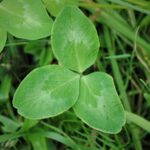 For over a thousand years, the people of Ireland have celebrated this day, dedicated to their patron saint. Falling in the middle of the Lenten season, it was an excuse to set aside the prohibitions against meat, drinking, and dancing. Patrick was born in the 5th century AD in Roman Britain. He was captured and taken into slavery at the age of 16, where he later escaped. Eventually, around 430-432, Patrick returned to Ireland, preaching the Gospel. Legend has it that he explained the Holy Trinity in terms of the shamrock, the three-leafed clover found in abundance throughout the country. He reportedly died on 17 March 461.
For over a thousand years, the people of Ireland have celebrated this day, dedicated to their patron saint. Falling in the middle of the Lenten season, it was an excuse to set aside the prohibitions against meat, drinking, and dancing. Patrick was born in the 5th century AD in Roman Britain. He was captured and taken into slavery at the age of 16, where he later escaped. Eventually, around 430-432, Patrick returned to Ireland, preaching the Gospel. Legend has it that he explained the Holy Trinity in terms of the shamrock, the three-leafed clover found in abundance throughout the country. He reportedly died on 17 March 461.
Sometime in the 9th or 10th century, depending on your sources, the Catholics began celebrating his feast day on March 17th as a religious holiday. The first recorded parade was held in 1601 in a Spanish colony in what is now Saint Augustine, Florida. The celebrations grew from there. In 1772, Irish soldiers serving in the English military marched in New York City to honor their patron saint. The holiday became secularized, and today it seems everyone is Irish on that day.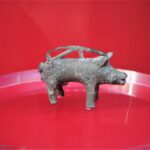
But before Patrick preached the birth of Christ, who did the Celts worship? Or did they? In preparation for my new series, I spent a few days studying the early Celts in Austria, in Hallstatt and Hallein, and losing myself in the museums. There are few sources concerning their faith and religious beliefs. But it appears they did practice forms of religion quite different from people today. Evidence of animal sacrifice has been found worldwide throughout time as offerings to a powerful being. And it was no different with the early Celts in areas such as Hallstatt in modern Austria.
Votives, or offerings to higher powers, have been discovered throughout the areas occupied by the Celtic tribes. The findings include weapons, valuable metal items, decorative jewelry, utensils, food, and drink. Some are in the form of burnt offerings. Motives for this behavior consist of pleas for divine aid through difficulties, such as childbirth, sickness, conflict, or danger. Others may be offered in gratitude; a rich harvest, a successful hunt, or safe travel. While we may not understand them, specific locations are associated with offerings such as rivers, streams, or lakes. They may be buried, such as some burnt offerings. Or they may be placed in a grove or the crossroads at a high mountain pass.
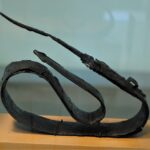 Groups of precious objects found together are referred to as a hoard. Groups of hoards are known as depots. Unlike grave goods, these pieces are purposefully placed in areas that are difficult to access. Weaponry used as an offering is usually deformed or damaged to prevent further human use, whereas those found in graves were whole and ready for use in the afterlife. Offerings are not randomly placed but carefully stacked or purposefully arranged. This behavior differs greatly from graves or in homes in settlements. The initial assumption was that they might be a storage method for hiding valuables. Still, judging from the items’ value, placement, and location, it is more plausible that these were ritual gifts to the gods.
Groups of precious objects found together are referred to as a hoard. Groups of hoards are known as depots. Unlike grave goods, these pieces are purposefully placed in areas that are difficult to access. Weaponry used as an offering is usually deformed or damaged to prevent further human use, whereas those found in graves were whole and ready for use in the afterlife. Offerings are not randomly placed but carefully stacked or purposefully arranged. This behavior differs greatly from graves or in homes in settlements. The initial assumption was that they might be a storage method for hiding valuables. Still, judging from the items’ value, placement, and location, it is more plausible that these were ritual gifts to the gods.
During the La Tène Iron Age period, these ritual items were highly decorated with circular patterns and motifs of flowers, people, and animals. 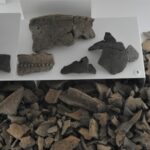 Their significance and meaning are lost today; we can merely theorize what they meant. The Celts were proud of their eloquence and shunned a written language. We can only examine their artwork for clues to their meaning. Does throwing valuable items into streams or rivers give us any insight? Water often depicts rebirth, renewal, and fertility. Items left at a crossroads keep us guessing at the divine presence for which they were intended in this sacred spot. In Alpine regions, significant quantities of potsherds and animal bones have been found in high mountain sites. The method of burning and their placement suggest offerings rather than remains of a feast. Did proximity to the sky make them feel closer to the divine beings there? Did they prepare a meal and share it with the gods as a plea for protection from harm? Or was it in gratitude for a good harvest?
Their significance and meaning are lost today; we can merely theorize what they meant. The Celts were proud of their eloquence and shunned a written language. We can only examine their artwork for clues to their meaning. Does throwing valuable items into streams or rivers give us any insight? Water often depicts rebirth, renewal, and fertility. Items left at a crossroads keep us guessing at the divine presence for which they were intended in this sacred spot. In Alpine regions, significant quantities of potsherds and animal bones have been found in high mountain sites. The method of burning and their placement suggest offerings rather than remains of a feast. Did proximity to the sky make them feel closer to the divine beings there? Did they prepare a meal and share it with the gods as a plea for protection from harm? Or was it in gratitude for a good harvest?
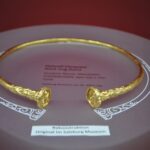 These practices are visible in the finds from the Middle Bronze Age (1600-1200BC) and peaked during the Urnfield period (1300-750 BC) before dwindling out. But who were these divine beings to whom they made their offerings? In my research, I am discovering similarities to those in Ireland and Wales in later periods. They seem to be locality-based, each tribe adopting the ones they need. Others have written about them, though many wrote years later. We will probably never know for sure.
These practices are visible in the finds from the Middle Bronze Age (1600-1200BC) and peaked during the Urnfield period (1300-750 BC) before dwindling out. But who were these divine beings to whom they made their offerings? In my research, I am discovering similarities to those in Ireland and Wales in later periods. They seem to be locality-based, each tribe adopting the ones they need. Others have written about them, though many wrote years later. We will probably never know for sure.

Excellent article very informative, thank you.
Thank you!